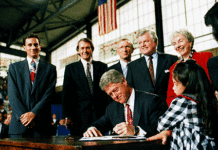By Al Norman
Don’t expect to see any new nursing homes built in Massachusetts in the near future.
That’s the word from the Massachusetts Public Health Council, which voted in mid-March to extend the current moratorium on new nursing home construction from May 1, 2010 to May 1, 2015.
This is good news. The Council’s vote to add 5 years to the moratorium followed a presentation by Department of Public Health (DPH) staff on the statewide nursing home bed need projections, which showed that the state will have a projected surplus in 2015 of 10,772 excess nursing home beds.
There are currently 41,581 licensed beds in Massachusetts, of which 1,572 are out of service.
In 2000, there were more than 54,000 nursing home beds. By 2003, there were slightly less than 52,000 beds, of which 46,000 were occupied.
In 2009, there were 48,839 beds, of which 38,639 were occupied.
Between 2003 and 2009, the number of occupied nursing home beds fell by 7,361 or 16 percent. The actual nursing home bed days dropped even more, because lengths of stay have shortened too. In total, between 2000 and 2010, nursing home bed days have fallen 27 percent.
According to the DPH study, the total number of people in nursing homes is expected to drop another 9.4 percent from 2008 to 2015. By 2015, there will be an estimated 37,657 people in nursing homes, compared to 41,581 residents in 2008.
The number of nursing home residents in the younger age ranges is expected to increase somewhat. For example, the number of residents in the 50 to 64 year old age range will increase by 9.5 percent — but people in the age bracket only comprise 9.5 percent of the total resident population in nursing homes. People over the age of 65 made up 89 percent of the nursing home population as of 2008. By 2015, people over 65 will drop to 87 percent of the total nursing home population. More importantly, the total of people over the age of 65 will fall from 37,048 people in 2008, to 32,849 — a drop of 11.34 percent.
The elderly population, 65 and above, is expected to jump from 894,415 in 2008, to 1,041,186 — a jump of 16.4 percent. During this period the elderly population will grow by 146,771 people, while the number of elders in nursing homes will drop by 4,199 people. This is excellent news for taxpayers, who pay for most of the cost of these nursing home beds through Medicaid.
The largest demographic drop in nursing home residents is projected to come from those 85 years and older, who in 2008 comprised 49.2 percent of the institutional population. By 2015, the 85 and older population is expected to fall to 46.8 percent. But more striking, the nursing home utilization rate for these elders will plummet from 149.51 per 1,000 people to 121.45 per 1,000 — a fall of 18.7 percent in utilization.
Given the continuing drop in nursing home patients — despite rising elderly demographics — and the already significant level of unoccupied beds, the Public Health Council has extended the moratorium on construction of new nursing homes. The Council’s move was not opposed by nursing homes.
These trends indicate the accelerating “rebalancing” of care from institutions to forms of community-based care, and the accompanying pressure being put on the need for an expanding array of long term care supports. The challenge to our next governor will be to fund the growth in community care out of the savings realized from falling institutional use.
Al Norman is the Executive Director of Mass Home Care. He can be reached at 413-773-5555 x 2295, or at info@masshomecare.org.












